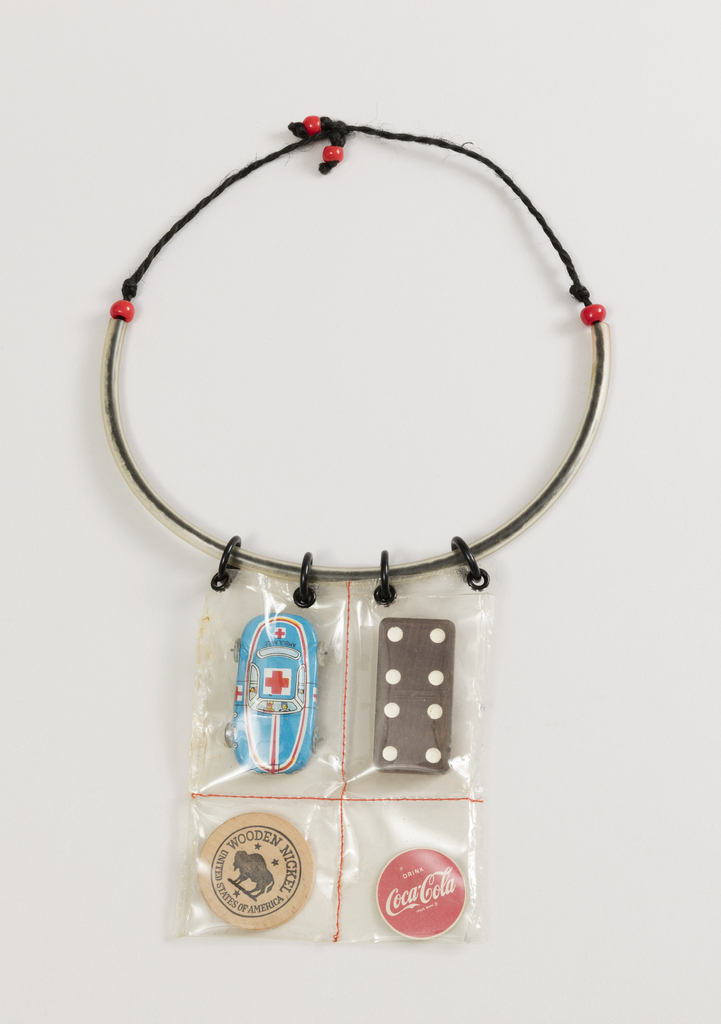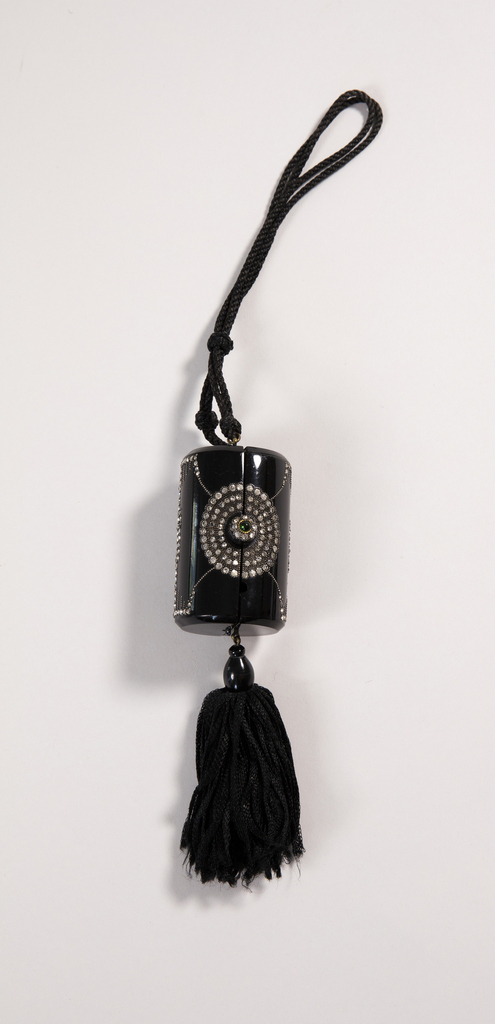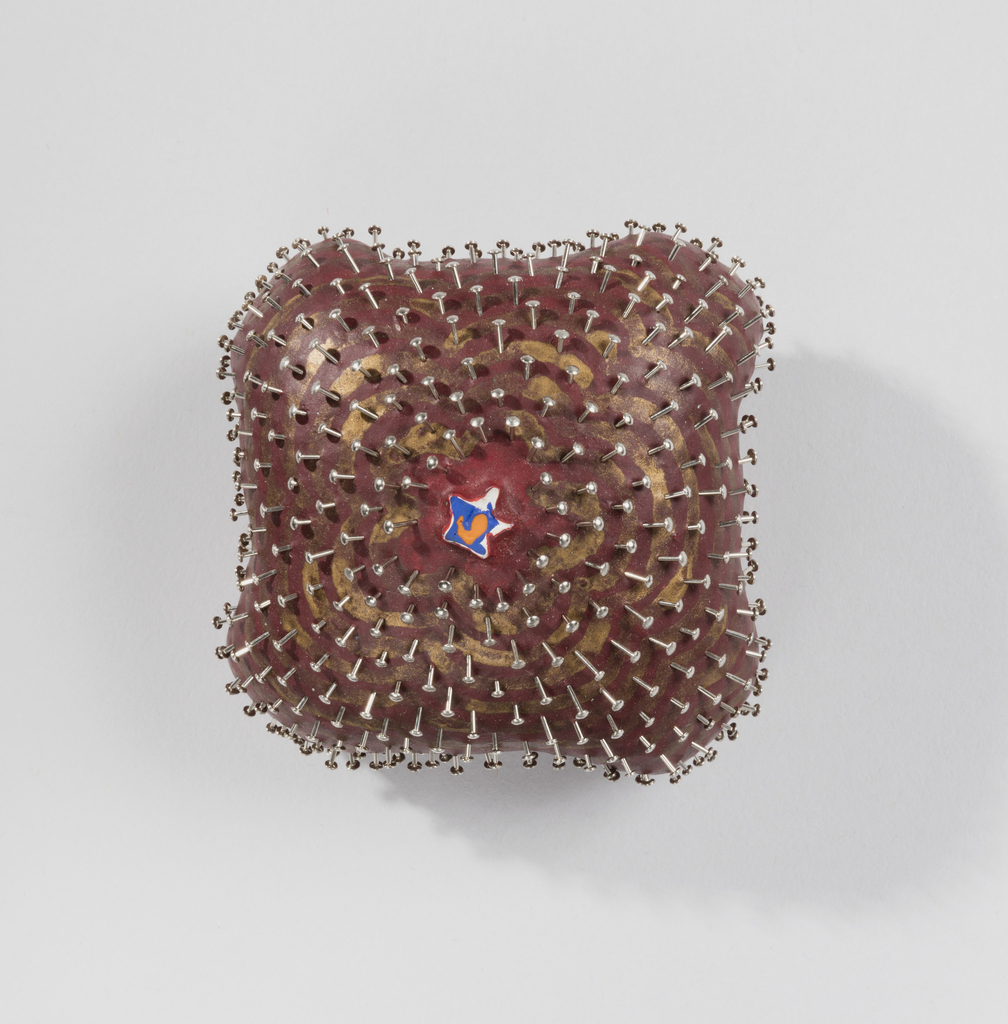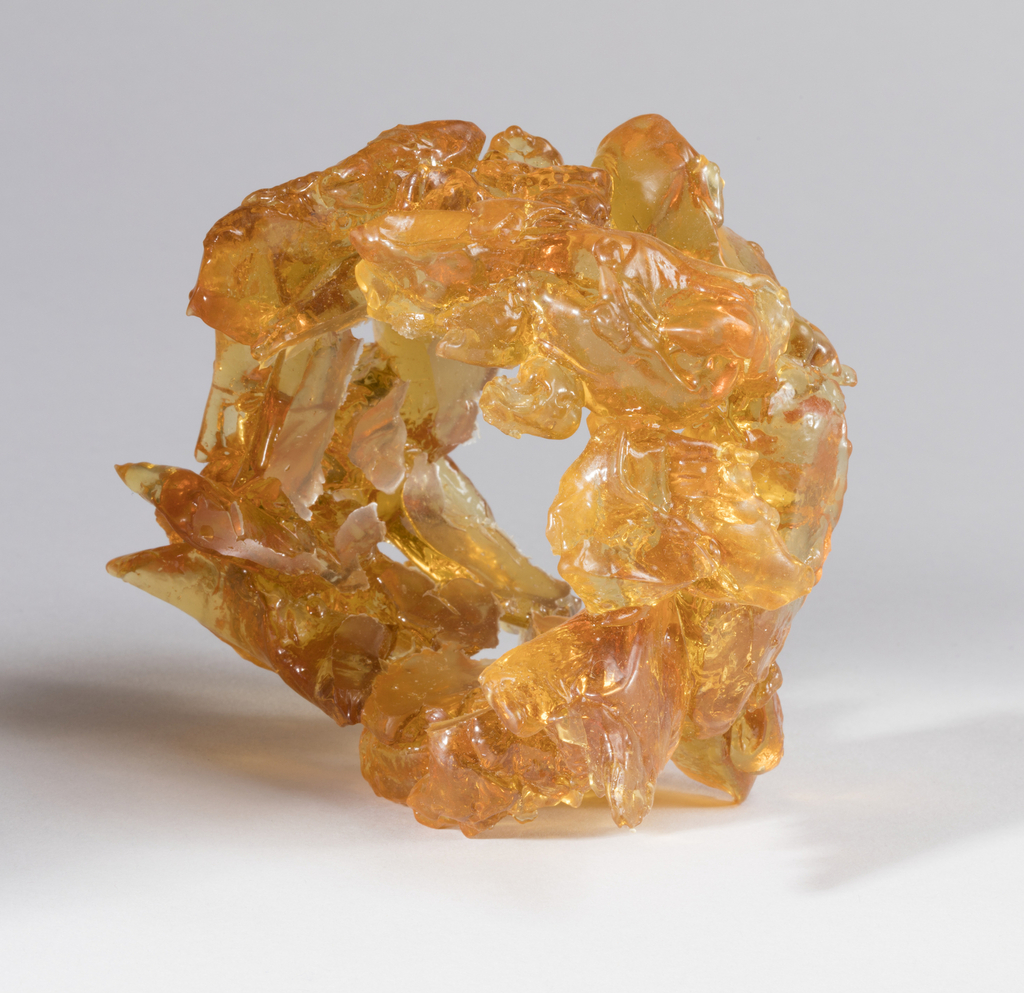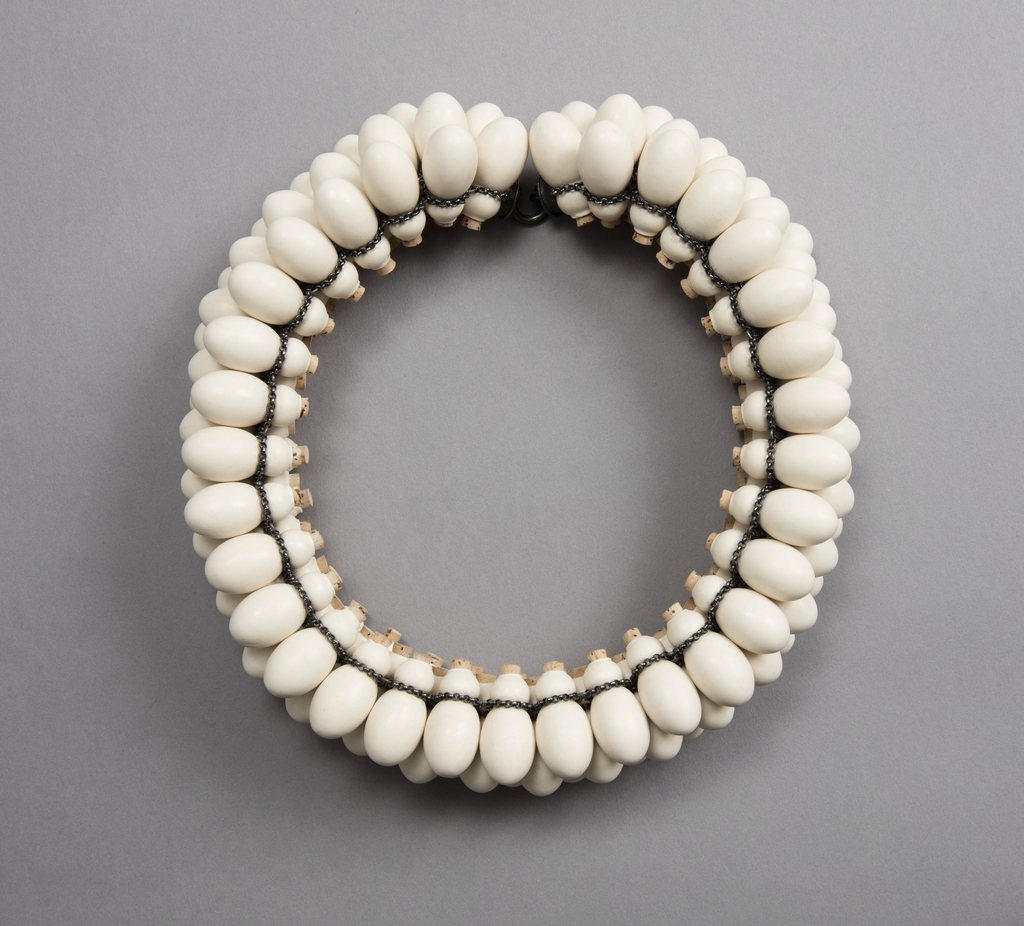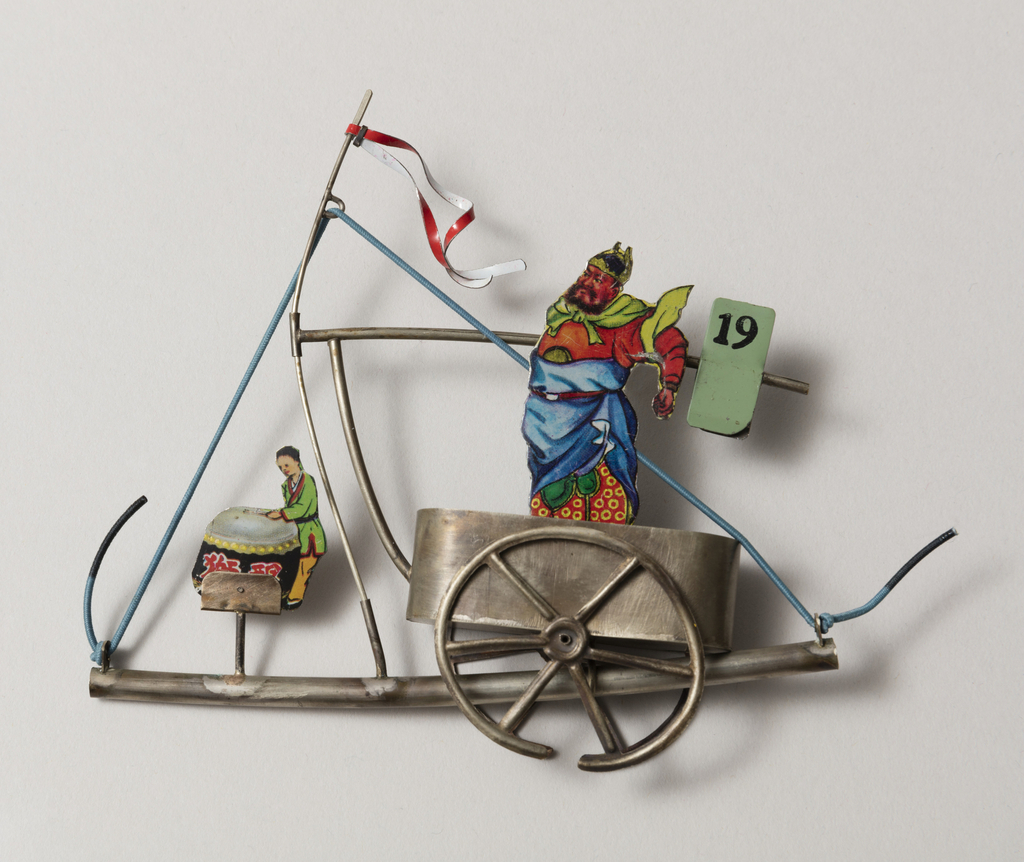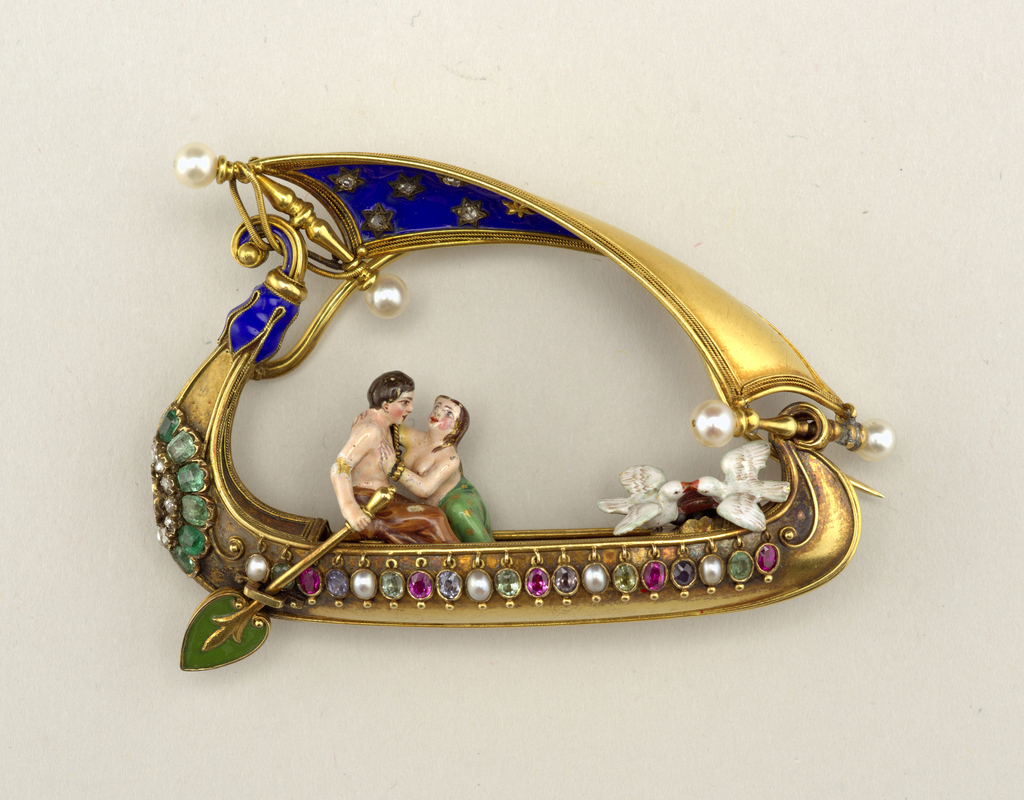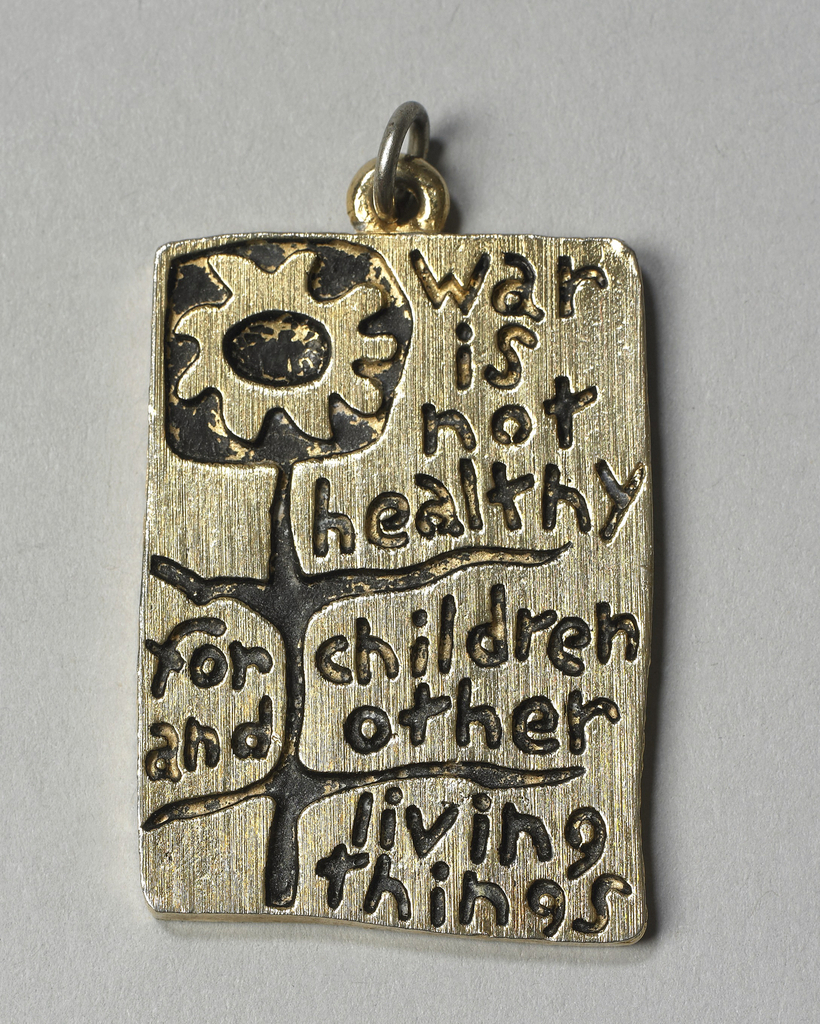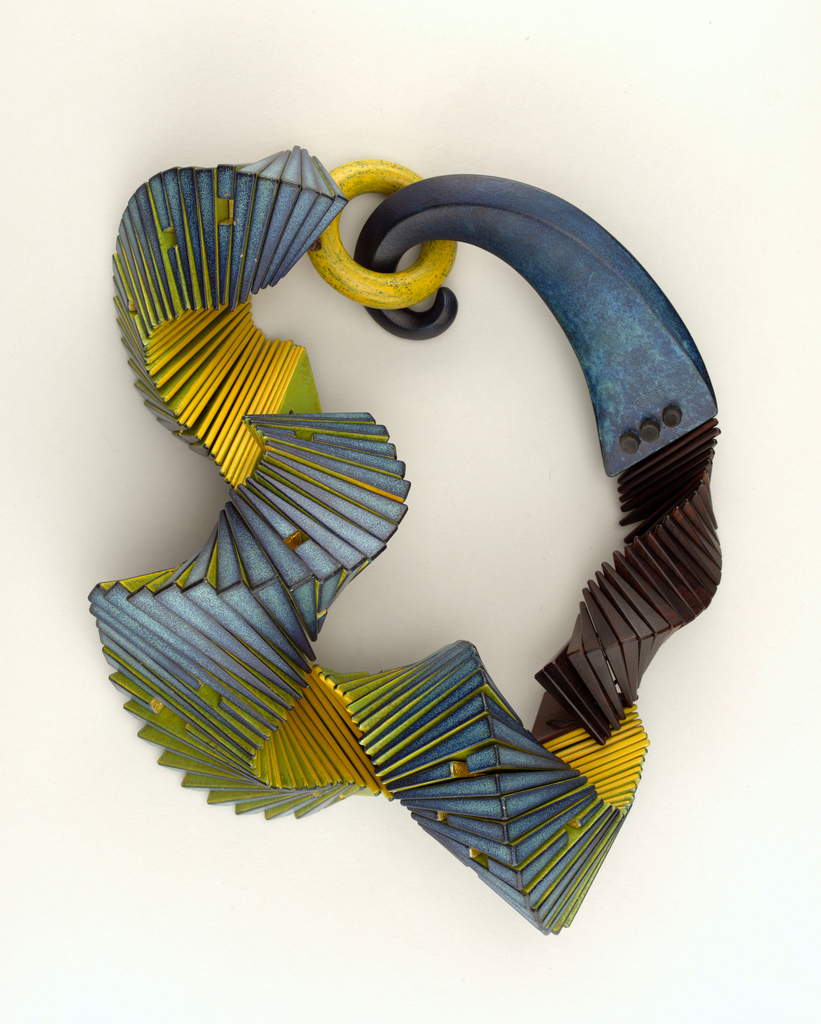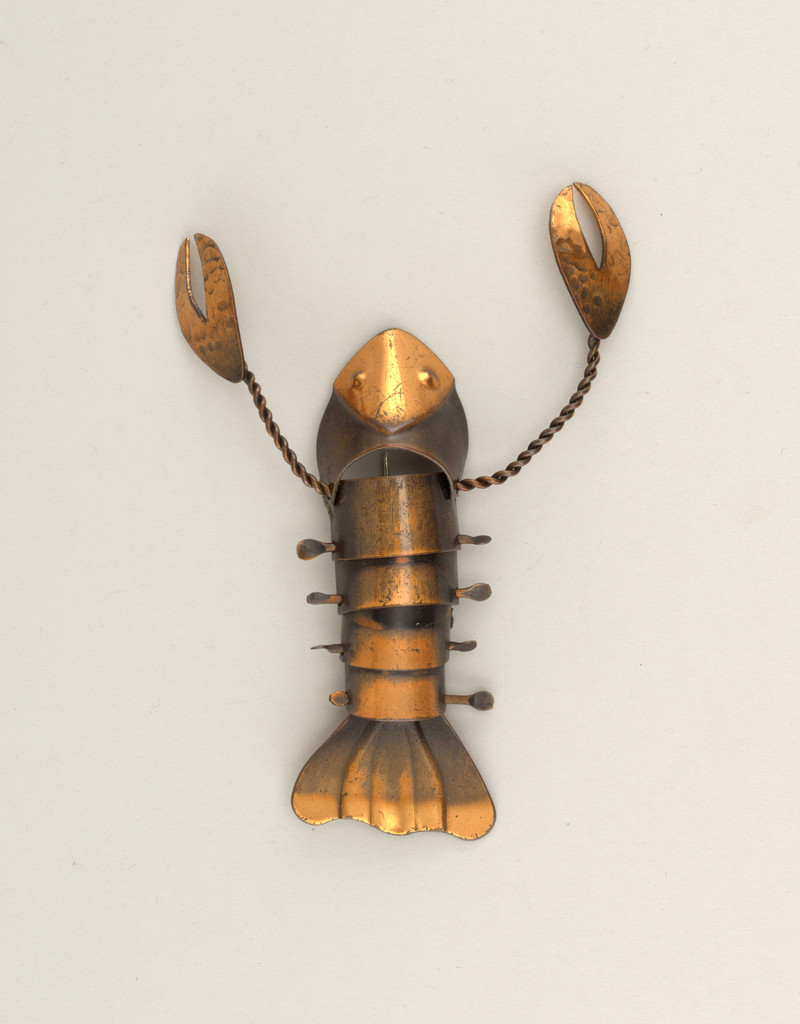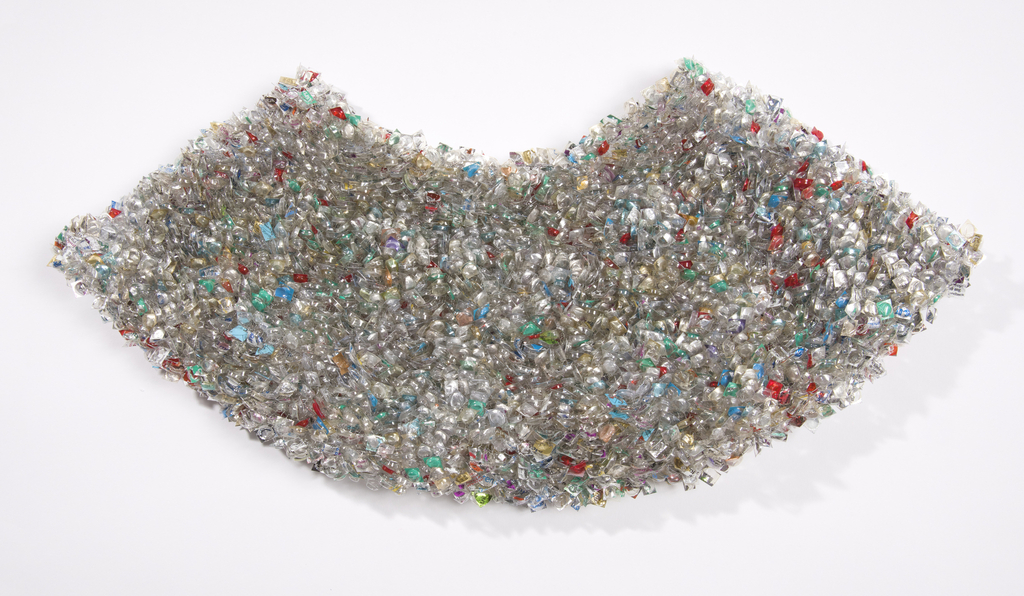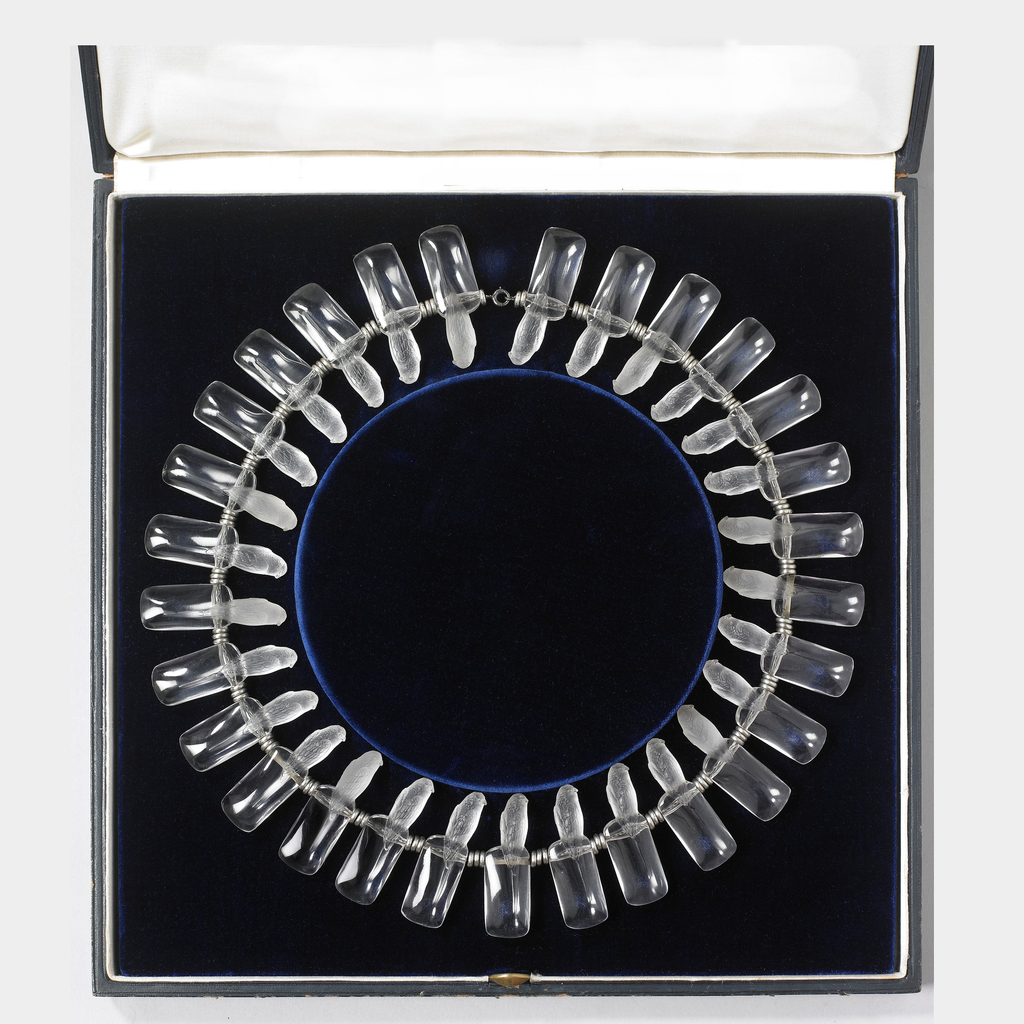In celebration of Women’s History Month, March Object of the Day posts highlight women designers in the collection. This necklace was made by Ramona Solberg in the early 1970s. It was in her private collection, and until her death she was its only owner. The pendant is a simple interpretation of reliquary jewelry which usually...
Small and charming, this dance purse epitomizes both radical changes regarding women’s independence as well as the Art Deco style. The 1920s saw a shift in women’s behavior as they gained freedom after attaining the right to vote and the ability to become self-reliant, holding jobs and earning their own income. This freedom saw women...
In last month’s Cooper Hewitt Short Story, we roamed the halls of the Cooper Union Museum for the Arts of Decoration in 1939, exploring past and present methods of collection display. This month, Julie Pastor, curatorial assistant at Cooper Hewitt, lavishes us with drawings of jewelry, many collected by the Hewitt Sisters, from the holdings...
This “pin” brooch, made in 1992 by jeweler Beppe Kessler, was part of a larger collection of “pin” brooches, each piece one of a kind. The series itself was derived from an installation by Kessler, also in 1992, which involved hanging large rounded, pin cushions on a wall. The brooches are an outgrowth of this...
During the last decade, Gaetano Pesce, long known for his varied designs and sense of experimentation, turned his attention to the creation of jewelry. Throughout his career Pesce has used resin to create such diverse objects as furniture, vases and shoes. Experimenting further, Pesce sought to create jewelry with this highly adaptable medium. To date,...
Ceramic beads have been used in jewelry for millennia. Recognizing the utilitarian quality of this material, Peter Hoogeboom chooses it as the primary material for his neckpieces. Hoogeboom had noted historical ceramic jewelry in museums yet did not often see clay used in contemporary jewelry. Through experimentation he found that the slip casting technique allowed him...
Felieke van der Leest’s Grey Heron Airplane ring is full of the whimsy which is an integral component of the artist’s imaginative and sophisticated design process, which incorporates techniques such as bead weaving and crocheting. This ring, like much of Van der Leest’s work, focuses on the use of mass produced toy animals, highlighted by...
This brooch from Esther Knobel’s Immigrant series expresses the artist’s playful side. The brooch features colorful figures, a circus performer and an ancient emperor, both cut from tin boxes of Chinese tea that Knobel found in an old shop on Jaffe Street in Jerusalem. The figures themselves serve as a metaphor for an immigrant, arriving...
An object like this brooch can tell a thousand stories. Are these two lovers on a romantic ride? Are they escaping and rowing into the sunset, never to return again? Have they been separated and is this the first time they’ve seen each other in years? The choices are endless, and that is only part...
While the 1960s brought on the Jet Age, the Beatles, moon landings and more, it also was a time of strife. The Vietnam War was not without its opposition, with students, anti-establishment activists, and mothers forming the largest groups of resistance. Mothers in particular were a strong sub-group of protesters, with groups such as Another...
When a piece of jewelry is made of natural materials such as this neckpiece designed by Liv Blåvarp, it forges a special connection with the wearer. There is something about natural substances that bring out feelings of sensuality and an intimate connection on a deeply primal level. When Blåvarp began making jewelry in 1984, she sought to make...
In 1922, Francisco Torres arrived in New York on a steam ship from his hometown of Puerto Plata, Dominican Republic, at the age of sixteen. Despite being an unaccompanied minor, he convinced immigration authorities to allow him to enter the United States by speaking the fluent English he learned from a native Virgin Islander living...
At first glance, this necklace catches the light and each individual bead shimmers like a mirror. Upon closer inspection, however, it is discovered that instead of beads, it is made up of small square pieces of medical pill blister packages, each loosely woven on thin, metal wire. This necklace was designed by Verena Sieber-Fuchs, a...
René Lalique was one of the most versatile jewelry artists working in the twentieth century, in that he was equally successful in two periods of design history. Lalique created both luxurious one-off pieces for fashionable ladies during the art nouveau period and also successfully created mass-produced glass pieces in the style moderne. Lauded during the...
This bracelet by British jewelry designer Peter Chang is wholly entertaining, as much fun to look at as to wear. The bright green wheel features ten evenly distributed projections or terminals, each of which ends in a differently shaped and colored finial. The bright green body is punctuated with blue dots of varying sizes and...
